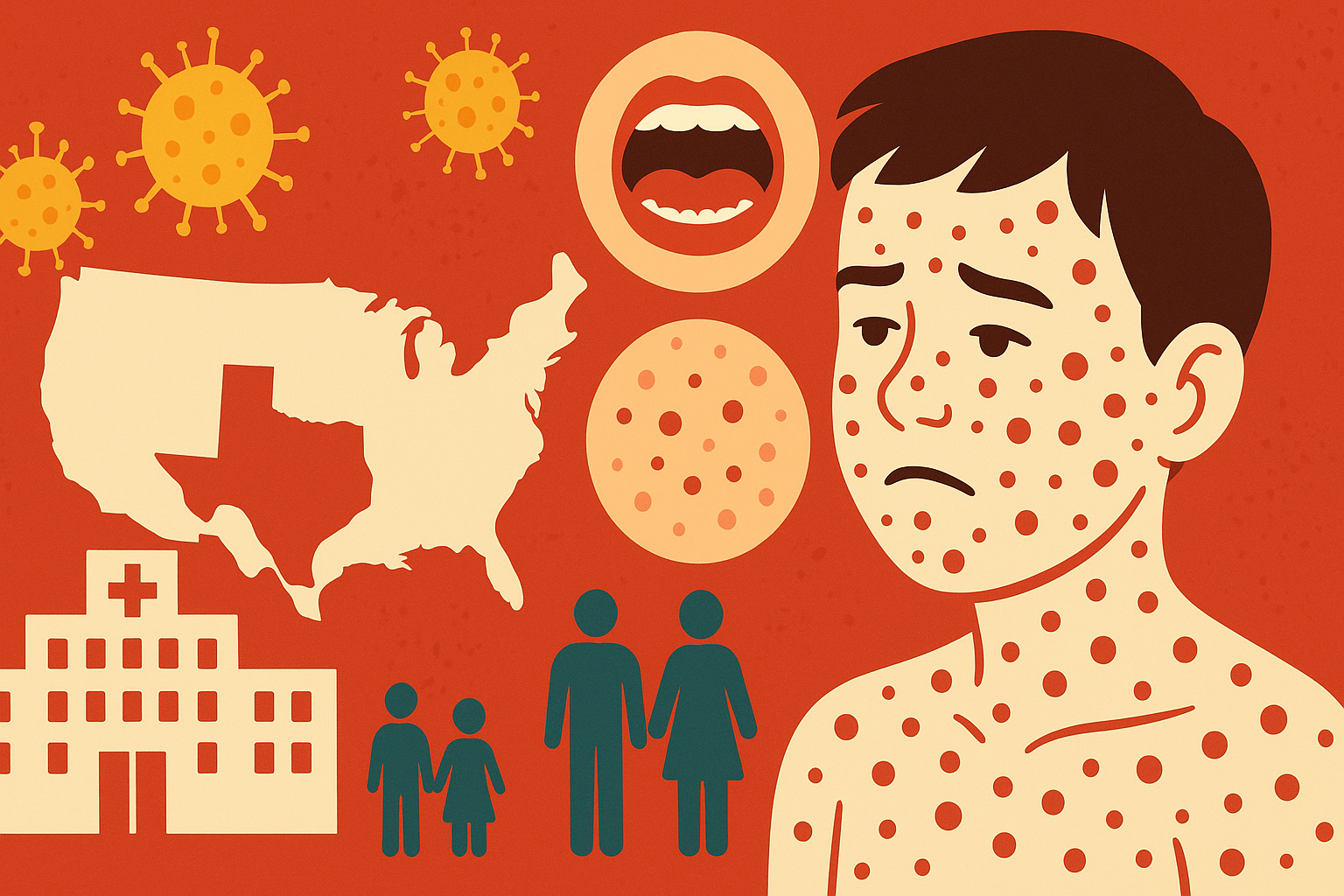The United States is currently experiencing its worst measles outbreak in 25 years, with confirmed cases in 2025 surpassing previous records set since the disease was declared eliminated in the country in 2000.
As of July 5, the Johns Hopkins University Center for Outbreak Response Innovation (CORI) has reported 1,277 confirmed cases of measles nationwide—exceeding the 2019 total of 1,274, which until now had marked the highest number of cases in the post-eradication era.
Origin and Spread of the Outbreak
A significant portion of the current outbreak is linked to a major cluster in west Texas, though the Centers for Disease Control and Prevention (CDC) notes that additional cases have emerged due to community transmission and travel-related exposure.
So far, 39 states and jurisdictions have reported confirmed measles cases, with the highest numbers found in:
- Texas
- New Mexico
- Kansas
Texas: Epicenter of the Crisis
According to the Texas Department of State Health Services, the outbreak in Texas has affected 753 individuals across 36 counties since January. Tragically, two school-age children from the hardest-hit areas have died. Texas remains the state with the highest case count in the nation.
Impact and Hospitalizations
The outbreak has led to 155 hospitalizations, including 431 adults and 824 children. The CDC has confirmed three deaths linked to the current wave of infections.
Why Measles Is So Dangerous
Measles is one of the most contagious viruses known. According to the CDC:
- 92% of unvaccinated people exposed to measles will contract the disease.
- 1 in 5 unvaccinated patients will require hospitalization.
The virus spreads through airborne droplets and remains in the air or on surfaces for up to two hours after an infected person leaves an area.
Recognizing Measles Symptoms
Early symptoms usually appear 7 to 14 days after exposure and include:
- High fever
- Cough
- Runny nose
- Watery eyes
Three to five days later, a rash typically develops, beginning on the face and spreading downward. Additional symptoms include:
- Koplik’s spots: Tiny white spots inside the mouth, which may appear 2–3 days after symptoms begin.
- Small raised bumps may form on top of the flat red rash, which may merge across the body.
- Fever can spike to over 104°F during the rash stage.
Preventing the Spread
The CDC emphasizes that vaccination remains the most effective protection against measles. The MMR vaccine (measles, mumps, and rubella) provides long-term immunity and is recommended for:
- Children (first dose at 12–15 months, second at 4–6 years)
- Unvaccinated adults, particularly those traveling internationally or in outbreak-prone regions
A Preventable Crisis
Health officials are urging increased vaccination efforts, particularly in communities with low immunization rates. With the rapid spread and the resurgence of cases once thought eliminated, the 2025 outbreak underscores the ongoing need for public health vigilance and vaccine confidence.
Sources: CDC, Johns Hopkins Center for Outbreak Response Innovation (CORI), Texas DSHS, WHO, University of Minnesota, and USA TODAY research.


